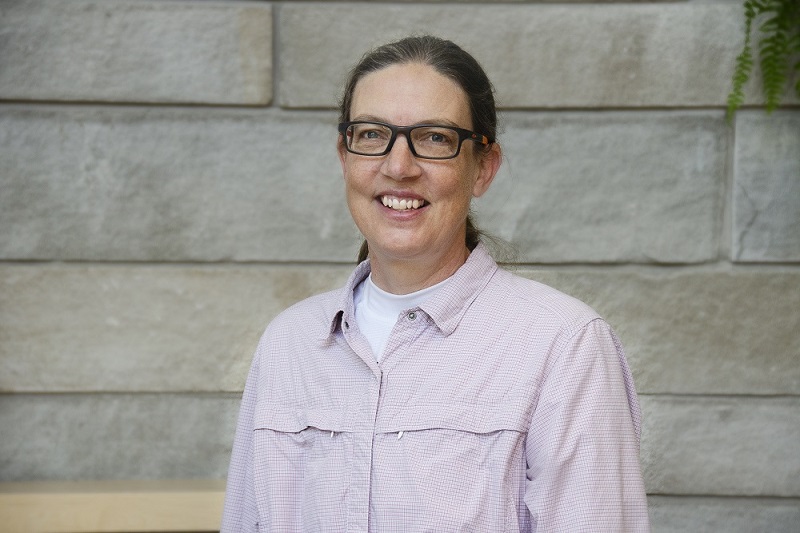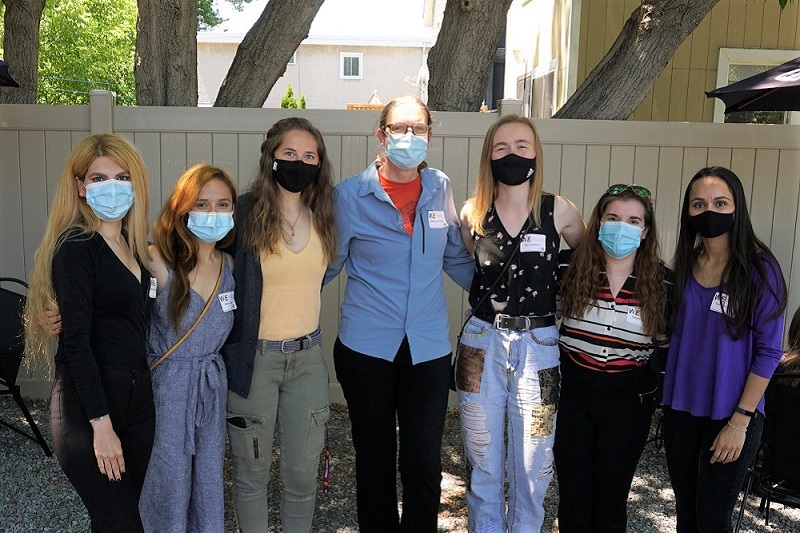Narrowing gender gaps in engineering
February 10, 2022
Share

It doesn’t require much investigation: anyone interested in gender imbalance and inequalities in academia worldwide will see gaps when it comes to male versus female participation in some research areas, especially the sciences and engineering. This reality led the United Nations General Assembly to declare Feb. 11 as the International Day of Women and Girls in Science. Since 2015, the date has been celebrated to raise awareness of gender inequities in science and promote engaging girls and women in STEM (science, technology, engineering and mathematics).
At Queen’s, the Faculty of Engineering has developed several initiatives to tackle this gender imbalance, including the appointment of the first Queen’s Chair for Women in Engineering (C4WiE) in November 2020. During her five-year term, Associate Professor Heidi Ploeg, an expert in biomechanics and design of biomedical devices in the Department of Mechanical and Materials Engineering, is hoping to shift the field towards women-friendlier environments for students, faculty, and those moving into the work force.
Data from Engineers Canada indicate that in 2020 only 20.6 per cent of the newly licensed engineers in the country identify as women. In academia, the percentage of female faculty members in engineering is even smaller: 16.6 per cent. This staggering imbalance led Engineers Canada to launch the 30 by 30 initiative, aiming to increase the number of female newly licensed engineers to 30 per cent by 2030.
Queen’s supports 30 by 30 as an endorsing member and participant. At Queen’s, almost 30 per cent of engineering undergraduate degrees awarded each year are to women – a number comparable to some other top universities in Canada, like the University of Toronto, McGill University, and Polytechnique Montréal. But to achieve this percentage for licensed engineers nationwide and to maintain and even increase it will require a collective effort that supports girls and women throughout their educational and research journeys.
“The primary goal of the C4WiE is to increase the number of women in engineering and their retention in the field,” says Dr. Ploeg. “The scope of our reach is broad, including K-12, undergraduate students, graduate students, faculty members, and practicing engineers.”
To promote this extensive culture change, Queen’s partners with other institutions in developing educational and outreach initiatives focused on engaging girls and women in engineering.

Diversity leads to better solutions
Stereotypes, discrimination, and harassment in the workplace and on campuses, and systemic barriers and biases are among the challenges women face in pursuing a career in engineering. Queen’s and the C4WiE help to address these challenges through a strong digital presence – the C4WiE website hosts resources and promotes events and a network of external groups dedicated to increasing the participation of women in engineering. C4WiE also designs online campaigns like Women in Action, created to collect and share pictures of female engineers across Canada, defying the stereotypical image of engineers and providing women a place to see themselves represented (Submit a photo).
Other initiatives promoted by C4WiE initiative include undergraduate research grants to support women-led research labs on campus, C4WiE mini-grants to support female students in engineering, and an annual course on Gender, Engineering and Technology. Last semester, Queen’s Engineering launched Engineering for Everyone, focused on promoting diversity and inclusion in the field, and hired a diversity and inclusion program manager, to provide training for staff and faculty and to support program development promoting participation of girls, 2SLGBTQIA+, Black, and Indigenous students and youth in STEM.
These efforts benefit women and other representative groups by providing tools and resources to face systemic barriers, but they are also tremendously beneficial for engineering as a field overall.
“Without diversity, engineers solve the wrong problems with less than optimum solutions,” states Dr. Ploeg. “Engineering will only find the best solutions to the most complex challenges we are facing with a diverse (including gender-balanced) community. We need all perspectives and experiences to solve the multidisciplinary challenges that we are currently facing like climate change and global health.”
C4WiE’s priorities for 2022 include creating a physical space for women in Queen’s Engineering to find and meet with each other, and to fund research examining the experiences of women working in the engineering field. Dr. Ploeg also would like to build connections between women engineers and industry partners to foster women’s participation and leadership in engineering beyond academia. She believes increasing female presence in both academia and industry is key to progress.
“To excel and succeed at learning or working in an already challenging field shouldn’t have additional challenges of underrepresentation,” argues Dr. Ploeg. “Seeing people who look like you or have similar experiences or perspectives helps to see what your career might look like and directly combats imposter syndrome.”
Engaging girls and women in STEM
To celebrate International Day of Women and Girls in Science, we invite all women in science at Queen’s to post pictures of them in action and tag us on Instagram (@queensuniversity) and Twitter (@Queensu). We’d love to share your passion for STEM and celebrate and inspire present and future women in STEM disciplines #QueensuResearch.
Queen’s has several successful, federally funded outreach programs aimed at tackling stereotypes and systemic biases though engaging girls from a young age in engineering and other STEM disciplines: Connections Engineering offers programs for kids from kindergarten to high school, Robogals introduces young women to robotics and engineering, and on campus summer camps like Math Quest and Science Quest have girls-only programs and mentorship opportunities.
Campus clubs and groups like Queen’s Women in Applied Science and Engineering (Q-WASE), Women in Science and Engineering (WISE), Women in Science Queen’s (WiSQ), Queen’s University Scientista, and Queen's Women in Computing (QWiC) help interested female students, staff, and faculty to connect to each other and join efforts in their campaigns for inclusion.
Partnership for progress
Combating gender imbalance and inequalities in academia worldwide will not be met by individual groups or universities. It is a long-term process that will require the collective effort of governments, industry stakeholders, and partnering education institutions to ignite a global cultural change. But the efforts at the individual level make a difference at the community and sector level, and beyond.
“In slightly over a year, we've seen significant steps forward at Queen's, but also in the engineering profession as a whole. In fact, in recent hirings for engineering, 40 per cent of new assistant professors identify as women,” highlights Dr. Ploeg. “By creating inclusive learning- and work-places we give diversity space to thrive and we all benefit. This is a collective effort to change engineering culture, and I'm confident we are on the right track.”